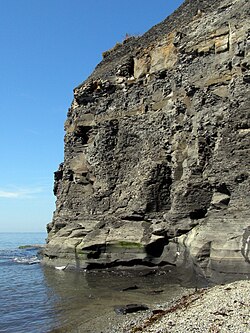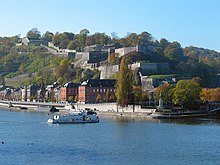

A promontory is a raised mass of land that projects into a lowland or a body of water (in which case it is a peninsula). Most promontories either are formed from a hard ridge of rock that has resisted the erosive forces that have removed the softer rock to the sides of it, or are the high ground that remains between two river valleys where they form a confluence. One type of promontory is a headland, or head.
Promontories in history
Located at the edge of a landmass, promontories offer a natural defense against enemies, as they are often surrounded by water and difficult to access. Many ancient and modern forts and castles have been built on promontories for this reason.

One of the most famous examples of promontory forts is the Citadel of Namur in Belgium. Located at the confluence of the Meuse and Sambre rivers, the citadel has been a prime fortified location since the 10th century. The surrounding rivers act as a natural moat, making it difficult for enemies to access the fort.
Another example of a promontory fort is Fort Pitt, which was built by the English during the American Revolution on the site of the former Fort Duquesne, which belonged to the French during the French and Indian War. The fort was located at the confluence of the Allegheny and Monongahela rivers, providing an additional layer of defense. The surrounding area eventually became the city of Pittsburgh, Pennsylvania.
In Ireland, many promontory forts were built by the ancient Celts for defense against invaders. These forts were often located on isolated peninsulas or headlands and were difficult to access, making them ideal for defending against enemy attacks.
The ancient town of Ras Bar Balla in southern Somalia is another example of a promontory fort. Located on a small promontory, the town was part of the Ajuran Sultanate's domain during the Middle Ages and was strategically located to defend against potential invaders.
See also
- Headland – Landform extending into a body of water, often with significant height and drop
- Isthmus – Narrow strip of land connecting two larger land areas
References
- Sanseverino, Hilary Costa (1983). "Archaeological Remains on the Southern Somali Coast". Azania: Archaeological Research in Africa. 18 (1): 151–164. doi:10.1080/00672708309511319.
External links
 The dictionary definition of promontory at Wiktionary
The dictionary definition of promontory at Wiktionary
This article about geography terminology is a stub. You can help Misplaced Pages by expanding it. |